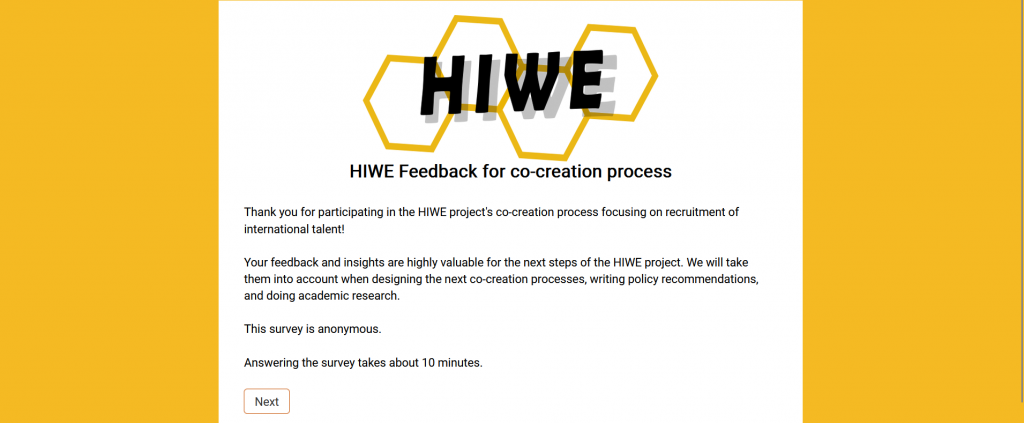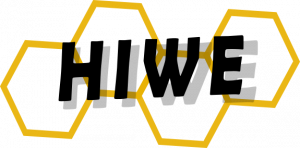Maximising the effects of a co-creation process
In this series of posts, we share our insights on how to facilitate multistakeholder collaboration – in particular collaboration related to enhancing highly skilled internationals’ position in the Finnish labour market. The first two posts gave tips for preparing a multistakeholder collaboration and running a co-creation process. This post considers what to do after a co-creation process to maximise value gained from it.
The insights are based on our recent experience of planning and organising three co-creation processes tackling the issues of recruitment of highly skilled internationals, impactful employment and entrepreneurship services, and inclusive workplaces.
Ask for feedback and act on it
After all the workshops, meetings, or other arenas of co-creation have been organised, it’s time to look back and see how the process went. As with any activity, it is good to at least ask feedback from participants to understand how they experienced the process. That feedback can be used to evaluate both the process and the achieved results. If the co-creation process is long, then feedback should be asked during the process as well.

It is also highly useful for the initiators and facilitators of the process to reflect on it. For example, simple tools like Post-Motorola can be used for reflection. It involves the group reflecting on these four questions together:
- What went well?
- What didn’t go so well?
- What did we learn?
- What could we do differently next time?
As the last questions here imply, both the feedback and reflection should be used for learning about the process and improving the process the next time around.
Communicate about what has been done with the results
Many of us have joined a great workshop where you had fun collaborating with new people. But after the workshop, you thought “was this it?” As we mentioned in the first post, it’s important to plan a process that makes participation meaningful to the participants.
However, the length and intensity of the processes vary. And so can the context of it. Even if you just have a single workshop, it’s important for participants to understand the bigger picture of what the workshop is related to and how you will use the results or insights gained from the workshop.
Especially if participants are co-creating solutions to challenges, participation in the process is likely to feel more meaningful if you communicate what has been done with the results. You want to make people feel their contribution has been valued and their voice was heard.
Of course, it is not just about the initiators of the process communicating about the results. In the previous post we mentioned that it’s important to create a sense of shared ownership of the outcomes of the process amongst all the participants.
Continue and encourage multistakeholder collaboration
It’s hard to draw a clear line on when a co-creation process ends. For example, in our co-creation processes the participants committed to joining a number of workshops and this was called a ‘co-creation process.’ However, the workshops formed part of a longer development process. We took the results of the three processes and used them to write policy recommendations. We invited all the participants to co-create the recommendations if they wished. From there, we will now continue to develop the recommendations and build a roadmap to put them into action.
Whether you call it multistakeholder collaboration or co-creation or something else, recognising the process nature of such activities is important. It is not so much about having workshops, but creating value, solving challenges and developing things together. The more complex the issues you are dealing with, the more time they will likely take to solve.
Whilst it’s great if a process ends with participants feeling they’ve accomplished something worthwhile together, you can’t usually save the world with one process. Trying to facilitate a sense of optimism can help with participants leaving the process feeling that “We can take this further even if we didn’t solve all the problems now.”
We see that multistakeholder collaboration should be a continuous process. This can mean different things. First, encouraging participants to share contact details, keep in touch, and build future collaboration. Second, if you are for example a service organisation, keep inviting the participants (as well as new participants) to be involved in future development too. Third, co-creation initiatives should also come from the grassroots level, from the “bottom up.” The bottom-up voices should be listened to and encouraged, as well as people enabled to initiate co-creation themselves, for example by providing resources.
Toward mutually beneficial collaboration
For the HIWE project, a key reason for organising multistakeholder collaboration processes was to strive for societal and firm-level changes that would make it easier for highly skilled internationals to work and be employed in Finland.
Bringing people together is valuable in many ways. For some, value may be in creating hope for better services; for some, receiving relevant information for designing those services; for some, increased understanding of different viewpoints; and for some, creating a sense of respect and belonging to society.
The benefits aimed at should be clear when designing, organising, and wrapping up the collaboration process. Participation should benefit all participants, not only the initiators of the process, and the anticipated outcomes should be communicated openly. Hence, please no hidden agendas or tokenism! Otherwise multistakeholder collaboration may damage more than it builds in the field of highly skilled internationals’ employment and entrepreneurship.
Authors: Piritta Parkkari, University of Eastern Finland & Satu Aaltonen, University of Turku
